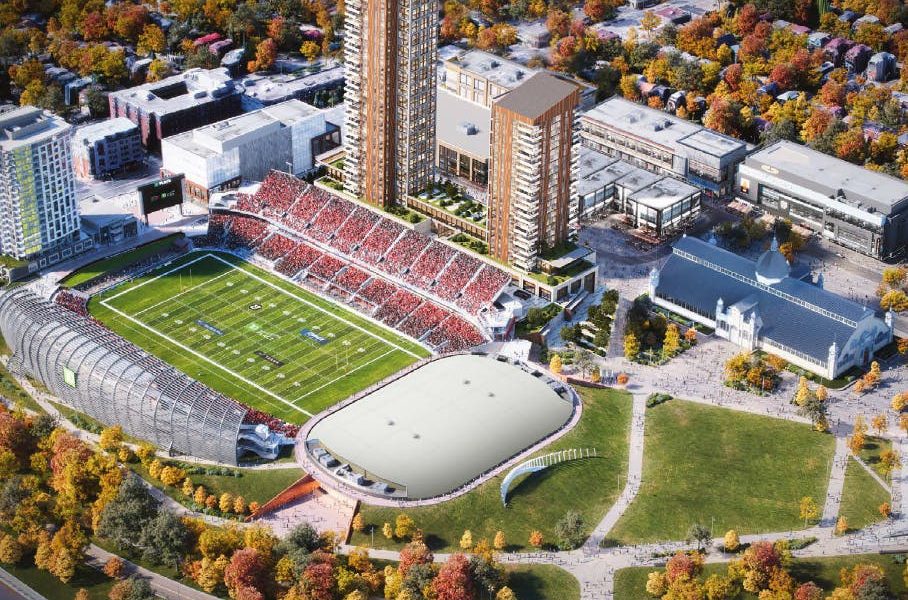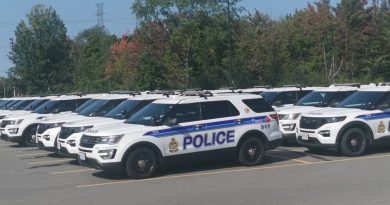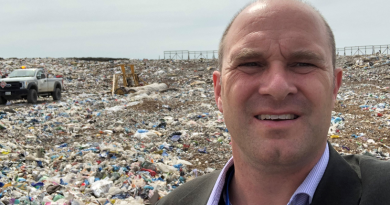Councillor Explains Position on Lansdowne 2.0
By Barrhaven East Councillor Wilson Lo
Next week, through a joint meeting of the planning and finance committees, we will be voting on what’s expected to be the vote with the largest financial implication this term, Lansdowne 2.0.
Any significant investment carries risks, including those made with public money (your money). Although the design and intention of the project is a progression of the site to further revitalise it and increase its economic potential, much of Lansdowne falls outside the core mandate of municipal government, meaning the risks associated with the proposal are unnecessary.
As designed and intended, Lansdowne 2.0 will address some of the work already underway from before the pandemic to increase foot traffic and animation to the site.
The new residential addition brings more people “permanently” on site, while the new event centre and north stands will provide fans, employees, and performers with necessary upgrades to improve their experience, safety, and accessibility.
The economic impact of the project during construction and after construction also stands to benefit the city and surrounding areas through direct capital and operational spending, supporting industries that supply goods and services, and employees spending their wages on consumer goods.
Ottawa will also no longer miss opportunities to host medium-sized events that currently skip the city due to the condition of the existing building.
A 2019 assessment highlights several physical and functional elements of the building which are incurable due to financial cost and limits of the physical structure in accommodating these changes.
Most notably, a combination of no insulation and poor ventilation/climate control capacity means the building becomes uncomfortably cold during colder months, wet utilities requiring freeze protection, and humidity levels which have affected the ice surface quality, led to mould growth, and indoor air quality concerns.
The arena also does not meet accessibility standards prescribed by the Accessibility for Ontarians with Disabilities Act (AODA), including insufficient accessible spectator spaces, aisle widths, and elevator access.
From a safety perspective, the seating aisles are too narrow to accommodate railings required by code, and the facility provides less than optimal space per occupant, especially when the temporary retail spaces are factored in.
Furthermore, inadequate operational, functional, and storage space has led to the creation of makeshift storage, office, and locker space—including washrooms converted to locker spaces and the food services office sharing space with dry goods storage.
Several red flags were raised, which left me with lots of questions. Physical maintenance and repair are regular occurrences throughout a building’s life, but many of the functional aspects of the building are longstanding and should have been evident by the time of the discussion on whether to renovate or replace took place.
I think it’s reasonable to expect that when OSEG and the city made the joint decision to keep to cosmetic improvements to the arena and north stands in 2012, the functional needs of the building highlighted by the report were foreseeable.
In fact, the AODA, which prescribes accessibility requirements in Ontario, became law in 2005, seven years before that 2012 decision.
The report includes some changes to the project cost, including a current cost of $419.1 million (increase of $86.5 million), $312.7 million of which will be debt. We will repay that debt over a 40-year term at $16.4 million per year at 4.25 per cent interest, with 75 per cent of the debt servicing funded through property taxes from the site.
Purely as an accounting exercise, it adds up, and the city would benefit from getting $419.1 million of assets at a cost of only $106.4 million.
However, the numbers hide the fact we will be foregoing $312.7 million in tax revenue over 40 years that would otherwise fund city services like roads, parks, recreation services, and public transit.
What I also didn’t mention is those numbers are all assumptions or based on assumptions (and the hope the provincial and federal governments will contribute $20 million to $50 million in capital funding).
Unlike Lansdowne 1.0, whose debt was issued at the same time as taxes, to repay that debt, began flowing, Lansdowne 2.0 has a six-year offset. The debt will be issued upon the arena and stadium’s completion. As the residential and retail development must wait until the arena and north stands are complete, the city will not begin receiving the full amount of property taxes until 2036.
To staff’s credit, the creation of a special reserve will account for that offset. Contributions to that reserve are set to begin next year. However, it does not appear to consider potential construction delays to any element of the project which can widen the offset.
A common narrative so far is doing nothing will cost more long term.
According to the staff report, ongoing maintenance of the arena and north stands would cost $12.5 million annually and would still eventually require replacement. Rather than jointly funded through the partnership, that eventual replacement would be fully city funded.
There are also warnings that OSEG could default on the agreement and become unable to contribute to the partnership, leaving the city to operate the site on its own.
But it’s not a binary decision—it’s not just yes or no to Lansdowne 2.0.
I think it’s worth exploring divesting the city of the parts of Lansdowne that should be private and operated in the free market, while retaining the assets that should stay public, among other options.
The consequence shared most with Councillors so far is OSEG will leave and sell its teams if the city does not support the proposal, which to me is a very strong indication it’s not a good deal for the city.
Most importantly, if OSEG leaves after the approval of the proposal, then the city—meaning you and I—would have no choice but to assume the remaining debt.
In good conscience, I cannot support Lansdowne 2.0.





